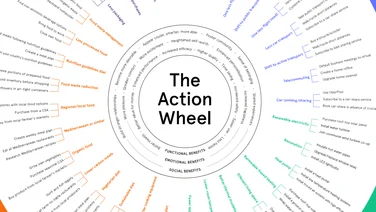Get Free Solar Panel Quotes
Find out how much solar panels would cost you
Do you need solar panels for your home or business?
Fill in our form - Get a free quote - Start saving on energy bills
Why get solar panels?
- Generate free, green electricity
- Reduce your electricity bill by up to 64%
- Get paid for what you don't use
As featured in:



News
The latest news, analysis, guides and opinion.

Octopus Energy launches Octopus Charge, its first home EV charger
The EV charger will be plugged into Octopus’ Intelligent Octopus Go tariff. Octopus Charge can power EVs for as little as 2p per mile. What’s more, it will be combined with Octopus’ innovative Drive Pack tariff, meaning customers can get unlimited charging for £30 a month.
-
 Bring down electricity costs to cut energy bills, government told The Climate Change Committee has urged the government to make electricity cheaper to drive adoption of heat pumps.
Bring down electricity costs to cut energy bills, government told The Climate Change Committee has urged the government to make electricity cheaper to drive adoption of heat pumps. -
 The Action Wheel: Simple steps to cut your carbon emissions The Action Wheel is designed to help households reduce their contribution to climate change through a series of simple steps
The Action Wheel: Simple steps to cut your carbon emissions The Action Wheel is designed to help households reduce their contribution to climate change through a series of simple steps -
 Housing: 7 steps towards cutting your carbon emissions at home Residential buildings are responsible for 20% of the UK’s carbon emissions, so making smart decisions at home can make a big difference
Housing: 7 steps towards cutting your carbon emissions at home Residential buildings are responsible for 20% of the UK’s carbon emissions, so making smart decisions at home can make a big difference -
 Which green tech has the best return on investment? Green tech offers a higher return on investment and lower break-even point than ever. Here are the best products to buy right now.
Which green tech has the best return on investment? Green tech offers a higher return on investment and lower break-even point than ever. Here are the best products to buy right now. -
 Eight renewable energy ideas for your home From solar panels to micro-combined heat and power, here are eight ideas to take advantage of renewable energy at home.
Eight renewable energy ideas for your home From solar panels to micro-combined heat and power, here are eight ideas to take advantage of renewable energy at home. -
 Government proposes to expand automatic energy compensation scheme The government has put forward new measures that it says will protect consumers against energy price rises, including cutting the time it takes to get compensation from energy companies.
Government proposes to expand automatic energy compensation scheme The government has put forward new measures that it says will protect consumers against energy price rises, including cutting the time it takes to get compensation from energy companies. -
 Why we should convert more urban areas to solar farms Cities have lots of unused space that could be used to generate clean electricity. Find out why we should convert urban areas to solar farms here.
Why we should convert more urban areas to solar farms Cities have lots of unused space that could be used to generate clean electricity. Find out why we should convert urban areas to solar farms here. -
 Transport: 8 steps towards more sustainable mobility Rethinking how you get from A to B is a great way to shrink your carbon footprint. Take action today using insights from The Action Wheel
Transport: 8 steps towards more sustainable mobility Rethinking how you get from A to B is a great way to shrink your carbon footprint. Take action today using insights from The Action Wheel -
 The 10 best foods to grow indoors at home You can grow dozens of foods indoors, with limited space – and it could save you hundreds of pounds per year. Here are the best ones.
The 10 best foods to grow indoors at home You can grow dozens of foods indoors, with limited space – and it could save you hundreds of pounds per year. Here are the best ones.